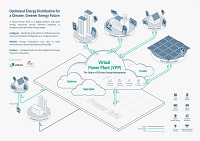Please submit all written comments via email to Ong_Guang_Yong@ema.gov.sg and Kwok_Sher_Wei@ema.gov.sg by 5pm on 8 May 2023 in the format shown in the Appendix of the consultation document. You are requested to submit a soft copy of your submission in both PDF and Microsoft Word format.
- About EMA
- Our Energy Story
- Consumer Information
- Regulations & Licences
- News & Events
- Partnerships
About EMA
Who We Are
Learn about EMA’s leadership, milestones and accomplishments.
Join Us
Explore the career, scholarship and internship opportunities available in EMA.
Our Energy Story
Overview
Learn how the Singapore Energy Story charts the path to a net-zero future.
Energy Supply
Gain insights into the Four Switches powering Singapore towards a cleaner energy future.
Energy Demand
Discover ways to enhance energy efficiency and lower your carbon footprint.
Energy Grid
Explore how EMA ensures a reliable and secure energy supply for everyone.
Energy Market Landscape
Learn about the intricacies of Singapore’s energy market structure and operations.
Consumer Information
Electricity
Get tips on buying electricity and protecting your family from electrical hazards.
Gas
Learn about purchasing gas and safeguarding your family against gas hazards.
Solar
Access information on installing solar panels at your home and selling excess electricity to the national grid.
Regulations & Licences
Regulations
Stay up-to-date with the latest regulations, policies and frameworks governing the energy sector.
Licences
Learn about the licences that EMA issues to different stakeholders in the energy sector.
Regulatory Publications
Read about the Codes of Practice and Circulars that EMA publishes to regulate the energy sector.
Partnerships
Calls for Proposal
Collaborate with EMA in co-creating innovative solutions for the energy sector.
Consultations
Give your comments and feedback on EMA’s policies and regulations.
R&D Engagements
Discover how EMA works with stakeholders to catalyse new and innovative digital technologies.
Talent Development
Learn about EMA’s efforts in nurturing talent and cultivate interest in the energy sector.
eSERVICES
Get quick access to EMA’s services for application of worker licences, scholarships and more.
Government officials will NEVER ask you to transfer money or disclose bank log-in details over a phone call. Call the 24/7 ScamShield Helpline at 1799 if unsure. For more information on how to protect yourself against scams, please visit www.scamshield.gov.sg.
Industry Sector:
Decision
A total of 10 companies responded to the consultation paper. Feedback received had indicated that the industry was generally supportive of the Centralised Process and recognised the need for a centralised planning process to avoid under/over-capacity in the system. However, there were requests for greater clarity on EMA’s supply and demand projection methodologies, operating parameters of generating unit built by EMA, provision of revenue support for new generation planting and the proposed Request For Proposal (“RFP”) timeline. These are addressed in the attached Final Determination Paper. The framework for the Centralised Process and the RFP for new generation capacity are also set out in this Final Determination Paper.
EMA will continue to review the design framework of the Centralised Process and the RFP for new generation capacity to safeguard the continued security and reliability of the Singapore power system.
Download
Update
The consultation has closed for comments.
Download
Please refer to the attached the addendum issued for the consultation.
Consultation
Over the past two decades, investments in new power generation technology and capacity have been driven by the commercial considerations of power generation companies (“Gencos”). These considerations include Gencos’ own business plans and their outlook for electricity demand. While this approach has generally served us well by increasing innovation and efficiencies in operations, it does not provide sufficient assurance that there will be sufficient generation capacity at the system level.
While high electricity prices typically signal to companies that capacity is tight and new plantings are needed, these signals are generally too late as it takes around four to five years to build a combined cycle gas turbine (“CCGT”) generating unit on a green field site. This may result in periods of insufficient generation capacity, which increases the risks of volatile electricity prices and blackouts. On the other hand, periods of sustained high prices on the Singapore Wholesale Electricity Market (“SWEM”), increases the risk of uncoordinated multiple plantings, leading to excess capacity. Such prolonged cycles of over and under-supply make it challenging for private generation companies to make long-term investment decisions in generation capacity.
This is further exacerbated by the energy transition, where rising carbon taxes, higher financing costs and concerns about asset stranding may discourage investments in new thermal generation units which will still be needed to meet growing electricity demand and maintain a secure and reliable power system in the near and medium-term.
In Oct 2022, the Ministry of Trade and Industry (MTI) announced that the Energy Market Authority (EMA) would be introducing guardrails to strengthen the existing competitive market structure and ensure that Singapore is well-positioned to navigate the energy transition. In particular, to ensure that we have sufficient generation capacity in time to come, MTI announced that EMA would be planning and coordinating capacity building at the system level via a Centralised Process. This consultation paper sets out the details of this Centralised Process.
Industry Sector:
Tags
Share















